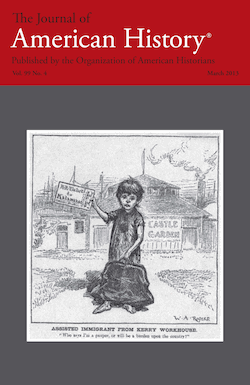Introduction
Before Americans could have the Hula hoops or Twinkies that helped to define the postwar-era, there had to be a prodigious and reliable supply of crude oil. The best evidence of 20th century Americans’ overwhelming dependence on petroleum may be our complete neglect at providing it proper credit for enabling this standard of living. Even now, most of us barely get past a first-grade understanding of our dependence on oil. Oil does not just fuel our vehicles. Oil has changed our diet, our clothes, our neighborhoods, our jobs, our fun—in fact, everything about our society. “Oil for Living” provides some concepts for how we might add this story more accurately to the history of post-war America and the activities below will help you to extend these points in the classroom.
Petroleum, of course, occurs naturally; it is humans’ use of it that has radically changed over time. Much of this “high-energy” existence took shape during the Industrial Revolution, which was defined by a philosophy of development that infected much of the Western world, particularly that of Europeans. Ultimately, the nation founded as an experiment in democratic thought, the U.S. marked the most fertile terrain for this new way of controlling and, ultimately, resisting the limitations that nature had placed on humans for generations. In the U.S., expansion and development became one of the rites of individualism to which all citizens should have access and opportunity.
On a global scale, though, it is this industrial transition–or fork in the path of human development—that propelled some nations to unthinkable advancement and development and left others increasingly far behind. Among global historians, Robert Marks describes the fissure separating such societies as “the Gap.” Although such a gap of development had occurred by the mid-1800s, new ways of doing things and new energy sources compounded the distinction so that by the early 1900s, nations on each side of the gap might appear entirely unrelated–almost as different species.
Energy was the key to expanding this separation among their constituents. John R. McNeil writes that once deeply into the era of industry, the problem for developed nations was to “...get energy in useful form in the right place and the right time for whatever we might wish to do.” As some nations mastered this process better than others, their economies and political standing changed. Some societies used this expansive–some might say profligate–use of energy as a defining cultural trait. McNeill argues that during the industrial expansion of the 19th century, the worldwide energy harvest increased about fivefold. In the twentieth century, the harvest grew by sixteenfold on top of that! Many humans came to use energy in profoundly new ways.
What does such massive change look like? Energy is in use all around us; however, it actually is figureless and without form. It is a force, a power; it is knowable in its products and labor, shaping our culture and helping to define our history. A more careful historical accounting reveals that many components of our everyday life can actually be traced to patterns of energy use. And, very possibly, a more sensible energy future will derive from such a reconsideration of our past.
Sections Guide
You may use the “Sections” menu on the upper right side of each page to navigate through this installment. Provided below is a summary of each section in this installment.
The full text of the article as it appeared in the June 2012 issue of the Journal of American History.
The author’s comments about using this article in the classroom. This installment includes seven exercises designed to be taught over two days:
A set of primary-source documents selected for use in teaching this article.
